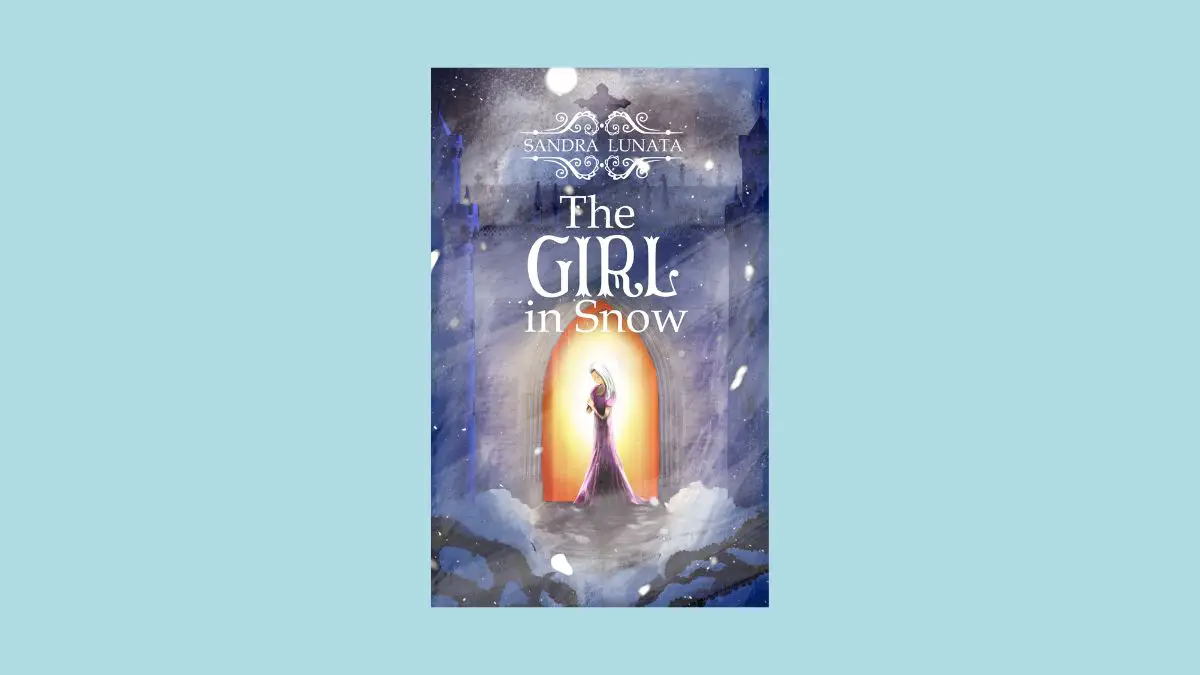Table of Contents
- Introduction
- 1. The Rise of “Eco-Conscious” Covers
- 2. Minimalism with a Bold Twist
- 3. Art-Inspired Illustrations: Blurring Lines Between Fine Art and Graphic Design
- 4. Retro Nostalgia: Embracing Vintage Vibes
- 5. Maximalist Typography: Letting the Words Speak
- 6. Dark Academia Aesthetics: A Gothic Revival
- 7. Interactive and Augmented Reality (AR) Elements
- 8. Layered Collages and Mixed Media
- 9. Inclusivity and Cultural Representation
- 10. Genre-Bending Covers
- Conclusion
Introduction
The world of book cover design will experience a significant evolution in 2025. As publishing adapts to digital landscapes and diverse global readerships, book covers reflect technological changes, aesthetics, and consumer expectations. This write-up delves into the key book cover trends defining 2025, exploring how these trends merge art, culture, and innovation.
Today, a book cover serves as more than just a visual introduction to the text; it embodies a mood, tells a story, and even reflects the social or environmental consciousness of the times. Whether on a bookshelf or an e-reader, these trends in book covers aren’t just about beauty—they’re about connecting meaningfully with readers. From minimalist aesthetics to experimental typography, this guide will look at how designers creatively push boundaries, embrace cultural diversity, and create covers that resonate with modern readers.
1. The Rise of “Eco-Conscious” Covers
As environmental awareness has intensified recently, so has the drive for sustainable publishing materials. In 2025, eco-conscious book covers will be more than a niche movement—they’ll be a powerful statement.
Designers and publishers increasingly opt for recycled paper, biodegradable inks, and plant-based coatings. There is a visible shift toward embracing a raw, natural look, with covers that showcase earthy tones, organic textures, and often, a tactile quality that reminds readers of nature’s presence. Covers made from natural fibers, like jute or hemp, create a sensory experience beyond visuals.
This eco-consciousness is translated into subtle, nature-inspired designs for digital-first or ebook-exclusive covers. Earthy colors, soft hues, and minimalist botanical or landscape illustrations give the impression of sustainability, even if the cover is virtual. This trend aligns with the eco-conscious mindset of Gen Z and Millennial readers, who are increasingly mindful of the impact of their consumption choices.
2. Minimalism with a Bold Twist
Minimalism isn’t new, but in 2025, it’s evolved with a twist: bold minimalism. Designers are stripping covers to their essentials while introducing striking, statement-making elements—often with a single, impactful image or a bold splash of color. This approach combines the simplicity of clean lines and whitespace with unexpected elements that captivate the eye and make a statement.
A minimalist cover might feature just one vibrant color, like neon green or electric blue, paired with stark black or white text. Alternatively, it could focus on a symbolic object against a neutral background. For instance, a mystery novel might display only a cracked key or a smoky silhouette, inviting intrigue without revealing too much.
The success of this approach lies in its ability to balance simplicity with a strong focal point. It’s clean, professional, and visually satisfying—qualities that appeal to today’s readers who value aesthetics without unnecessary distractions.
3. Art-Inspired Illustrations: Blurring Lines Between Fine Art and Graphic Design
Another standout trend in 2025 is integrating fine art with graphic design. Book covers increasingly take inspiration from classical art movements, using hand-drawn or digitally-rendered illustrations reminiscent of impressionist, surrealist, and cubist styles. This trend offers book covers of an art gallery quality, making each book a miniature masterpiece.
For example, literary fiction covers might showcase delicate watercolor washes, while fantasy novels might borrow surrealist-inspired dreamscapes. Bold, Van Gogh-esque brushstrokes, muted Renaissance-inspired portraits, and abstract designs based on Kandinsky’s work are common choices for covers targeting audiences interested in intellectual or “artistic” reads.
This trend doesn’t just beautify; it appeals to the growing readership interested in visually unique, collectible covers. By borrowing from high art, designers lend an aura of sophistication and timelessness to each book, making the cover an extension of the narrative within.
4. Retro Nostalgia: Embracing Vintage Vibes
Retro styles from the 60s, 70s, and 80s are making a big comeback in 2025 book cover design. With bright color palettes, geometric shapes, and vintage fonts, these nostalgic covers bring a playful, familiar vibe that resonates with both older readers who remember these styles and younger ones intrigued by retro aesthetics.
Retro-inspired designs often incorporate faded color schemes, large serif fonts, and abstract, kaleidoscopic shapes. Think book covers with warm sunset tones for romance novels or bold, contrasting shapes and stripes for science fiction. This trend brings comfort and familiarity, reminding readers of past eras while promising new, engaging narratives.
Authors and publishers are also using retro designs as a clever way to market historical fiction or memoirs. These designs subtly allude to the periods covered in the book. Retro nostalgia taps into the reader’s emotions, connecting them to the content and a shared cultural past.
5. Maximalist Typography: Letting the Words Speak
In contrast to minimalist designs, 2025 will see a rise in maximalist typography on book covers. These covers often place text as the focal point, using oversized, stylized fonts that dominate the design. Typography-driven covers can effectively capture attention and convey the book’s tone.
Designers are experimenting with everything from graffiti-inspired fonts to serif styles that feel like they’ve been pulled from vintage posters. This trend is particularly popular for nonfiction and memoirs, where the bold type is both a stylistic choice and an entry point into the book’s themes.
Maximalist typography is combined with layered effects—overlaying fonts in different sizes, colors, and opacities—to give the cover a sense of depth and complexity. This makes the cover feel dynamic and gives readers a taste of the energy or insight they’ll find within the pages.
6. Dark Academia Aesthetics: A Gothic Revival
The allure of dark academia—a subculture romanticizing learning, literature, and classic aesthetics—is strong in 2025. This trend is characterized by a brooding, moody aesthetic with rich textures, dark color schemes, and vintage-inspired fonts. Dark academia covers are particularly popular in emerging trends like gothic literature, historical fiction, and modern thrillers.
Cover designs often feature images of old books, vintage lamps, or abstract illustrations inspired by classical art. Black, deep blue, and burgundy tones dominate, while elements like ornate frames or gold-foiled fonts add a touch of elegance. By evoking a sense of intellectual mystery and timelessness, dark academia covers appeal to readers with a taste for introspective, philosophical themes.
7. Interactive and Augmented Reality (AR) Elements
With advancements in digital publishing, augmented reality (AR) is opening new doors for interactive book cover design. In 2025, some book covers will come to life when viewed through a smartphone or tablet. Readers can watch animations, explore additional content, or see book trailers integrated into the cover through an AR app.
This trend is particularly popular among young adult (YA) and fantasy novels, where engaging younger readers through multimedia experiences is key. For instance, a fantasy book cover might show a static castle that, when viewed through AR, becomes animated with flying dragons or twinkling stars. This creates an immersive experience, drawing readers deeper into the book’s world from the moment they pick it up.
Interactive covers offer publishers a novel way to captivate readers and encourage word-of-mouth marketing, as readers are more likely to share their AR experiences on social media, giving the book broader visibility.
8. Layered Collages and Mixed Media
The layered collage trend is another artistic approach gaining traction in 2025. Book covers are designed in this style, mixing textures, photos, illustrations, and 3D effects to create visually rich and layered compositions. This mixed-media approach gives covers a sense of depth, inviting readers to examine the cover closely and get a feel for the book’s complex themes.
This style is particularly popular in genres that deal with layered narratives, such as memoirs, psychological thrillers, or complex literary fiction. Designers can hint at the stories’ fragmented or multifaceted nature by incorporating various visual elements, such as torn paper effects, vintage photographs, and overlaying graphics.
The collage approach also appeals to readers who appreciate a handmade, tactile quality in design. It bridges digital design tools and traditional artistic techniques, appealing to those who value innovation and craftsmanship.
9. Inclusivity and Cultural Representation
Representation matters, and in 2025, book cover designs are increasingly showcasing diverse cultures, identities, and experiences. Publishers and designers are making a concerted effort to feature covers that reflect the varied backgrounds of their characters and authors, which has led to more inclusive visual storytelling.
This trend often features illustrated portraits, culturally specific motifs, and vibrant color palettes inspired by different traditions. Books with themes of identity, social justice, and personal growth are often designed to visually signal their inclusivity, with covers that proudly depict people of all races, genders, and orientations. This approach reflects the narratives and signals to readers that these books are inclusive spaces.

This trend speaks volumes for global audiences. Diverse book covers become beacons, inviting readers from various backgrounds to see themselves and their stories represented.
10. Genre-Bending Covers
Gone are the days of rigid genre-specific book cover rules. In 2025, designers are experimenting with genre-bending covers that break traditional norms. This trend is particularly prevalent in genres like science fiction, horror, and romance, where covers mix elements from different styles to create something fresh.
For instance, a horror novel might feature a pastel color scheme with soft, almost whimsical illustrations, contrasting the book’s theme and its cover’s aesthetic. Conversely, a romance novel might use dark or gothic visuals, signaling a darker or more complex love story. This genre-bending approach is a clever way to defy reader expectations and draw curiosity, creating an additional layer of intrigue before the first page is turned.
Conclusion
Book cover trends in 2025 is about more than just capturing attention; it’s about connection, representation, and experience. Designers are no longer confined to traditional approaches but instead explore new ways to bridge art, technology, and storytelling. As book covers evolve to become interactive, eco-conscious, and inclusive, they reflect contemporary society’s values and aesthetic preferences.
An innovative and resonant cover can make all the difference in a world where readers have countless options. These trends push the boundaries of design and ensure that books remain culturally relevant, visually enticing, and personally meaningful.

2 thoughts on “Exploring Book Cover Trends in 2025”